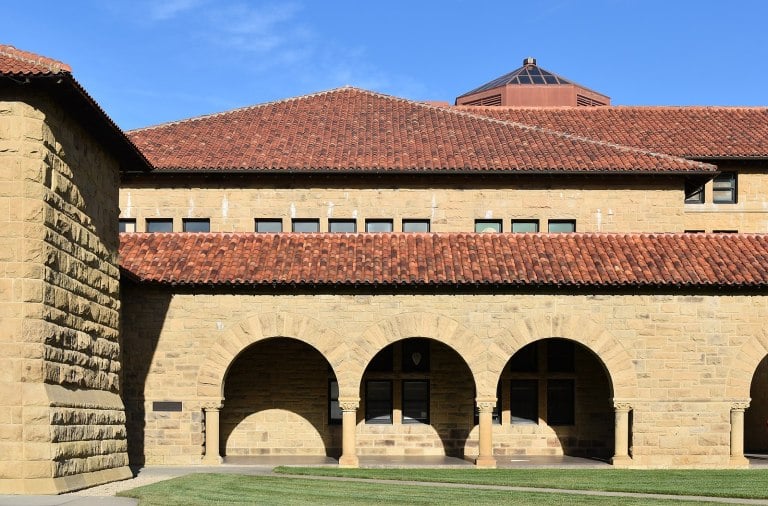Angèle Christin discussed her experience interviewing journalists in newsrooms in New York and France, asking how they are adjusting to the internet age, in a virtual roundtable discussion hosted by the Stanford Center of Philanthropy and Civil Society on Monday afternoon.
Christin, an assistant professor of communication, also discussed her new book, “Metrics at Work: Journalism and the Contested Meeting of Algorithms,” which examines how the use of metrics is rapidly changing the work of journalists and news industry. Over 120 readers from around the world tuned in to the discussion, including people from France, New York, Arizona and California.
While conducting research for her book, Christin learned these newsrooms were similar in many ways, but still had different reactions to data usage. She tapped into a tension she noticed in each newsroom — between editorial evaluation and click-based evaluation.
She noted that many journalists grapple with the question, “Am I a good journalist because my article got a lot of clicks or because my editor told me my writing was good?”
Christin explained that in the past, a handful of demographically similar journalists were shaping the world unidirectionally, without the interaction of the audience — but over the past three decades, “news production has moved online, and as it moved online, it changed in many kinds of dramatic ways.”
Now that journalists receive information about their audiences through comments, likes and click rate, there is a paradigm of publications determining whether to produce content that is high-quality or content that is popular and circulates virally.
“The goal now is to interact, to go viral, to be trending, to create buzz,” Christin added.
This rapid increase in fascination — almost obsession — with data and metrics has also changed the power-balance within newsrooms. Stacy-Marie Ishmael, the editorial director of The Texas Tribune and one of the event’s three panelists, commented on this adjustment, saying there was a clear hierarchy in her workspace — the voice of the editor suddenly had less power.
“The most senior editor in the newsroom suddenly had to justify their opinion to an engineer talking about data,” she said.
Panelist Meredith Broussard, a data journalism professor at New York University, explored how the relationship between self-worth and metrics is becoming increasingly prevalent among journalists.
Christin said that the advent of algorithmic technologies has changed journalists’ work professional identities and a “loss of control of their power” to “black-box platforms.” She added that media organizations used to have their own industry, and now they are competing for space in the technological sector with Facebook and other social media companies.
Panelist and University of Illinois at Urbana-Champaign associate journalism professor Nikki Usher also commented on this shift, saying that “the loss of control has become a feature of contemporary journalism.”
Despite this global fascination with numbers, Christin added that an important feature of her book is motivating readers to consider how they think about metrics. Instead of only focusing on “vanity metrics” — likes, retweets and so on — she believes metrics should be conceptualized as “complex symbolic resources that can take different meanings depending on who’s looking at them.”
Panelists also emphasized the importance of remembering that numbers rarely tell the whole story.
“Entire media organizations have optimized for hate reading,” Ishmael said. “And they use these flat figures to make user-experience decisions.”
Christin echoed this sentiment — however, she also noted the relative ease with which individuals “go back” to basic metrics.
“At the end of the day, your eyes are glued to the numbers, the rankings,” she said. “It’s not only just clickbait — it’s much more complicated.”
Contact Anuka Mohanpuhr at anuka ‘at’ stanford.edu and Matthew Turk at mjturk ‘at’ stanford.edu.
